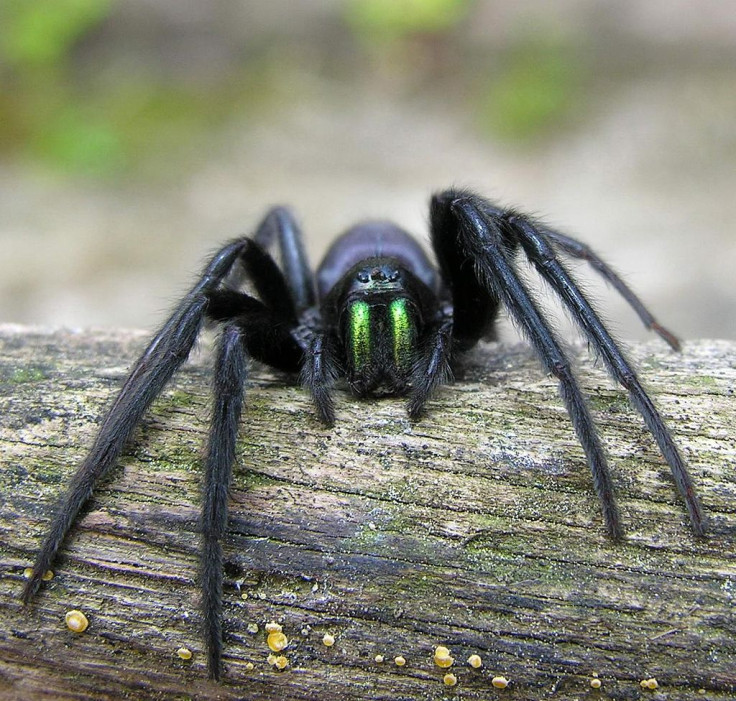Giant Green-Fanged Spider 'Attacks' Man in Devon Home as Species Spreads Across UK

Giant green-fanged spiders have been discovered invading homes across the UK, with one man being "attacked" by the creature.
Darren Driscoll filmed the moment when what is believed to be a tube-web spider tried to attack him.
The video, obtained by the North Devon Journal, shows the spider darting from its hiding place after Driscoll probed its web. It makes a grab for him before running back into its hole.
Tube-web spiders are found across the UK after coming to the country 150 years ago on ships docking in Plymouth.
It has a large brown body that can grow to over 2cm long and has huge green fangs. Although it will only normally bite if attacked, the pain has been described as a "deep injection" that can last for a few hours. Other reports suggest it feels similar to a bee sting.
According to the Natural History Museum, the number of bites are increasing across Southern England and have ventured as far as London.
Reports of sightings have increased in recent weeks. According to the Southern Daily Echo, a family in Southampton found 50 tube-web spiders in their garden.
Dan Jackson, 29, told the newspaper: "I'm not scared of spiders but even I'm freaked out by these ones. I first saw one when I went out into my garden and didn't think much of it.
"But when it got dark they all came out and there must have been more than 50 of them.
"I managed to catch one after I saw it rush across my fence and then jump off onto the ground. It was playing dead. I put a glass over it and moved it a bit and it shot up. I let it go and it moved off so quickly it was unbelievable."
Speaking about tube-web spiders previously, Kelvin Boot, a naturalist and former presenter on BBC Radio 4's Natural History programme, said: "This truly is a magnificent and quite beautiful spider with its chocolate brown body and bronze-green fangs.
"By any stretch of the imagination, this is an impressive spider. It sits at the mouth of its tunnel in old brickwork or behind loose bark or any other suitable hole, waiting for a hapless insect to stumble across the spokes — trip wires that alert the spider to its victim.
"Once detected, the spider moves like lightning. I defy anybody not to jump when this happens as it is such a surprise even if you are expecting it. The prey is dragged back into the narrow tube and eventually the spider's venom overcomes the prey."
© Copyright IBTimes 2024. All rights reserved.






